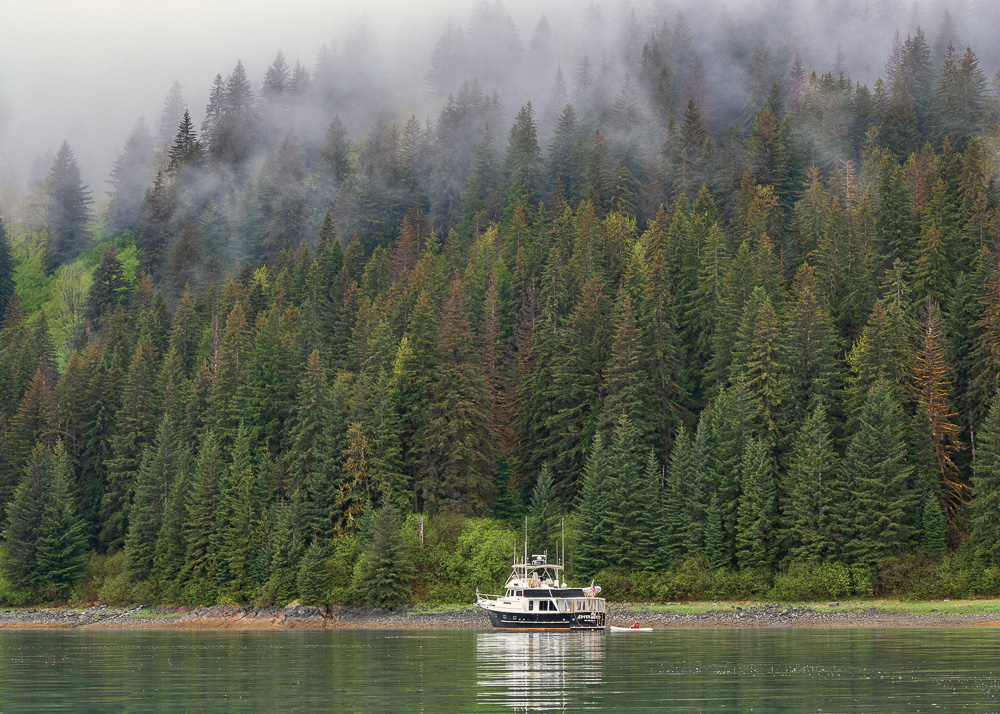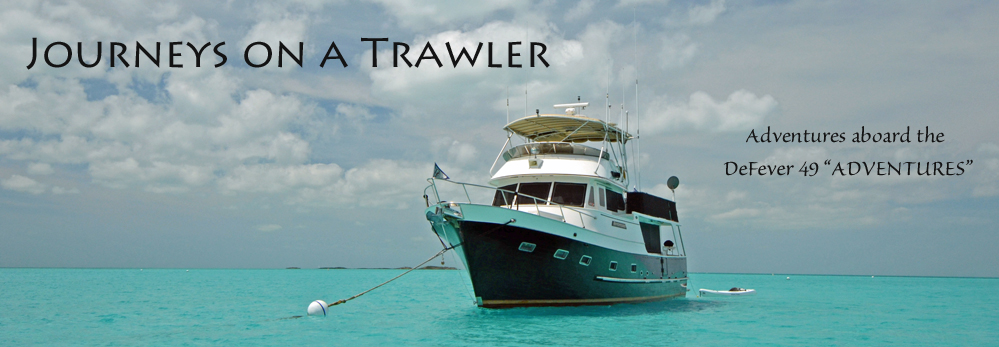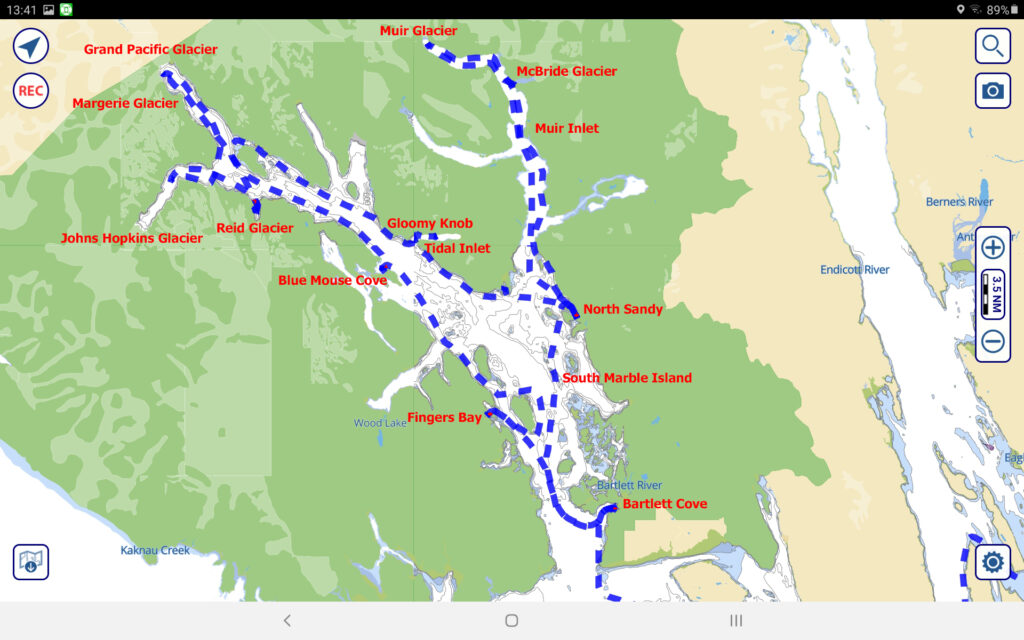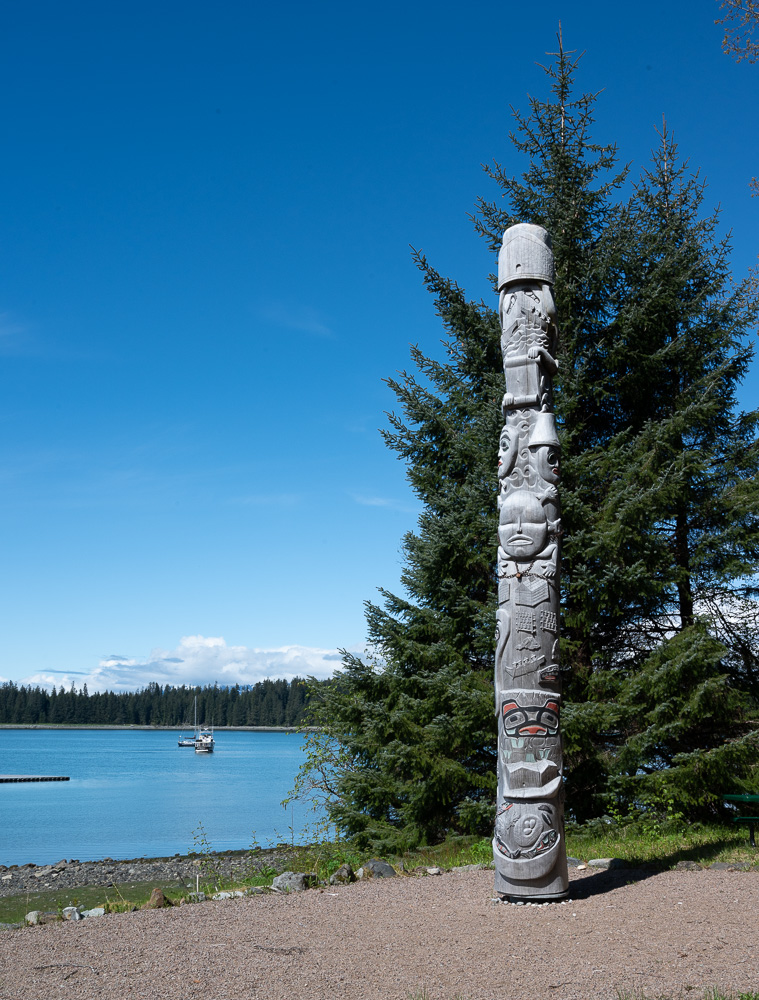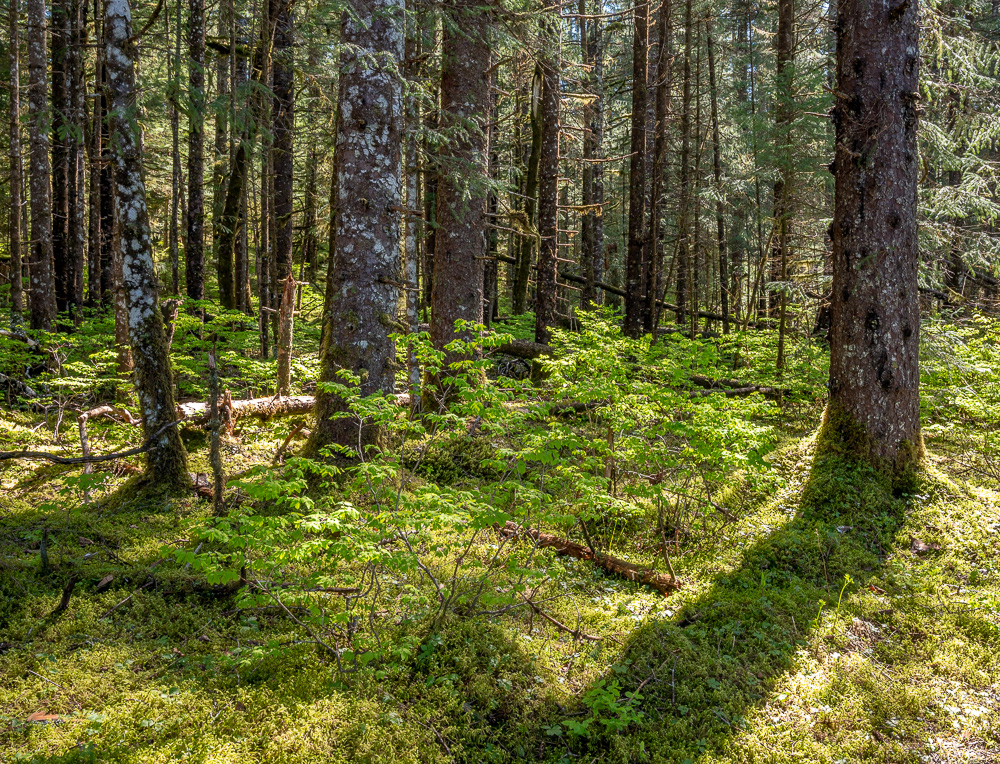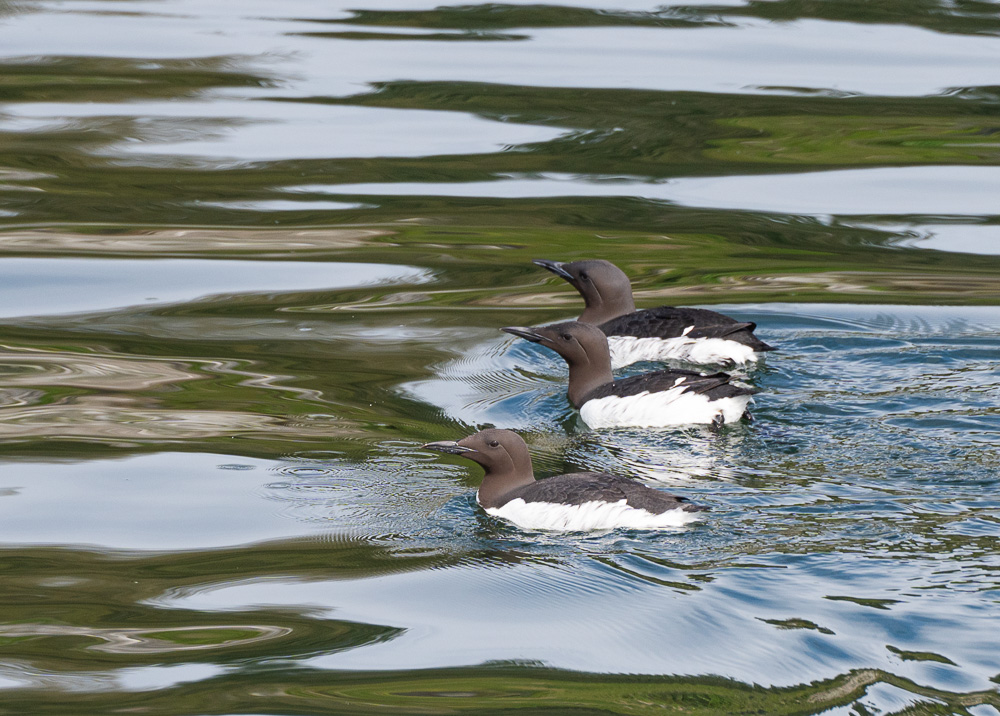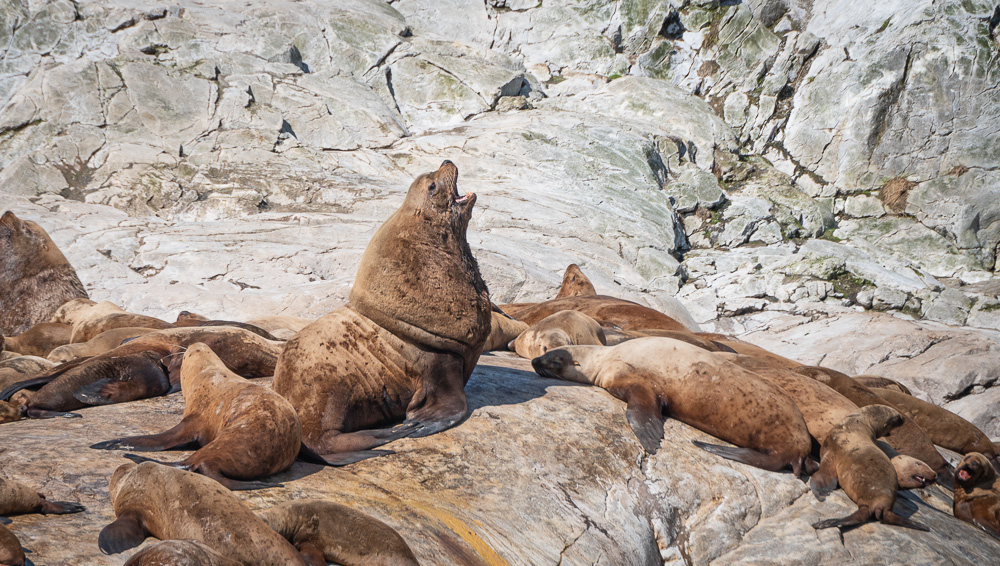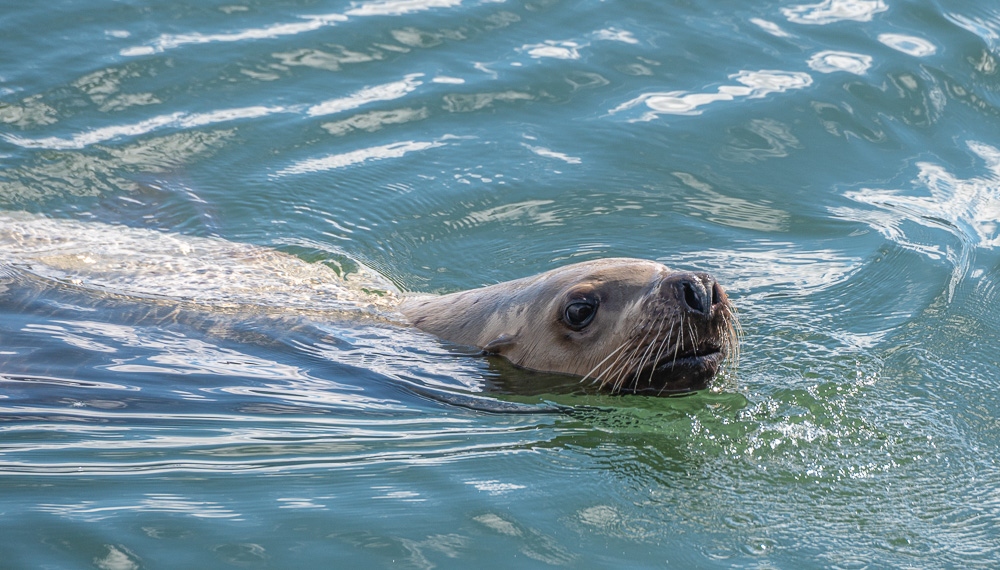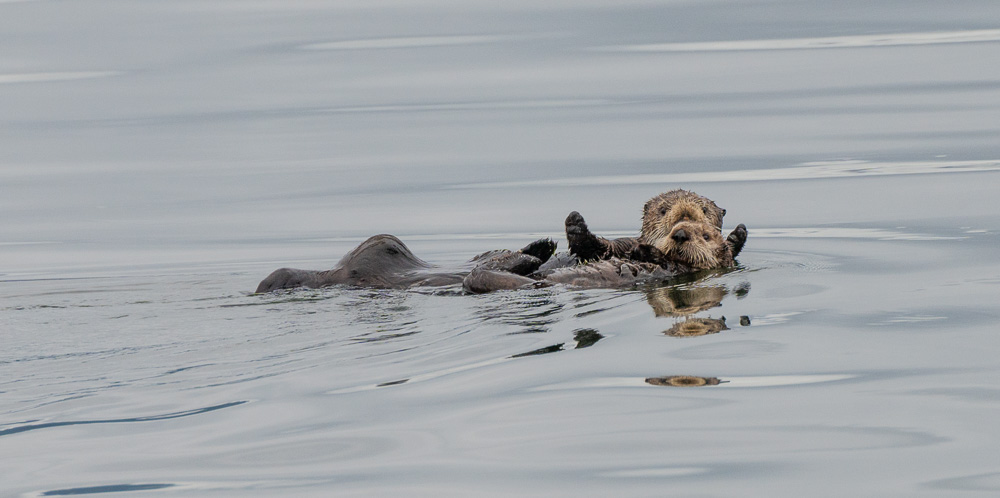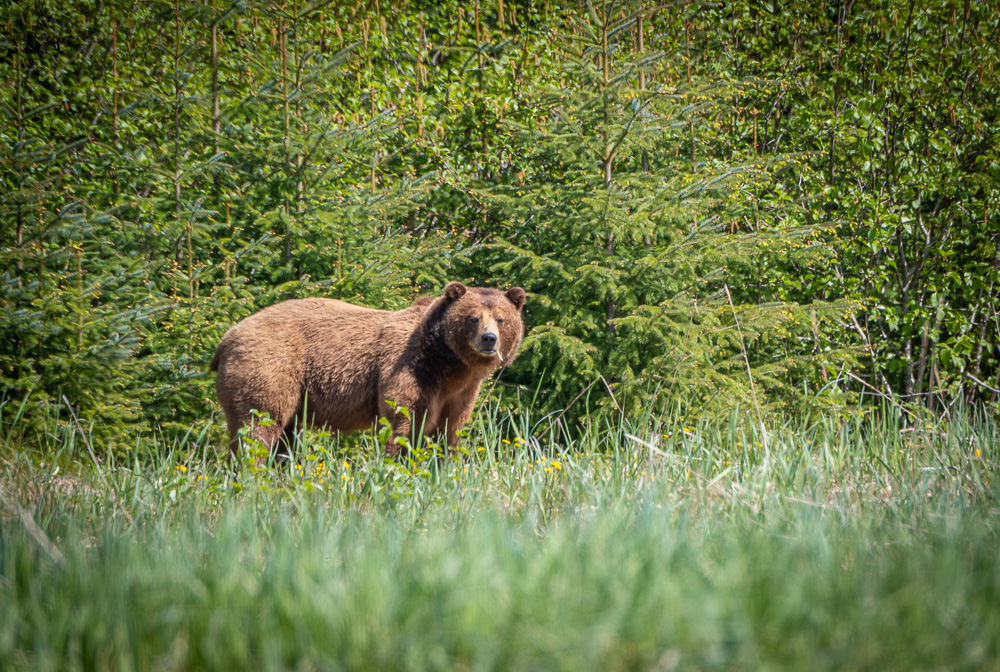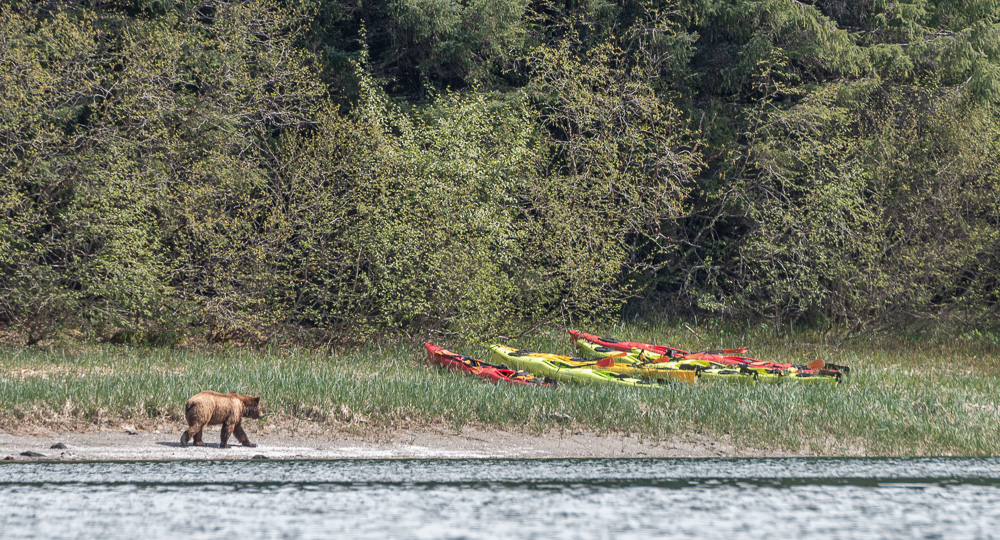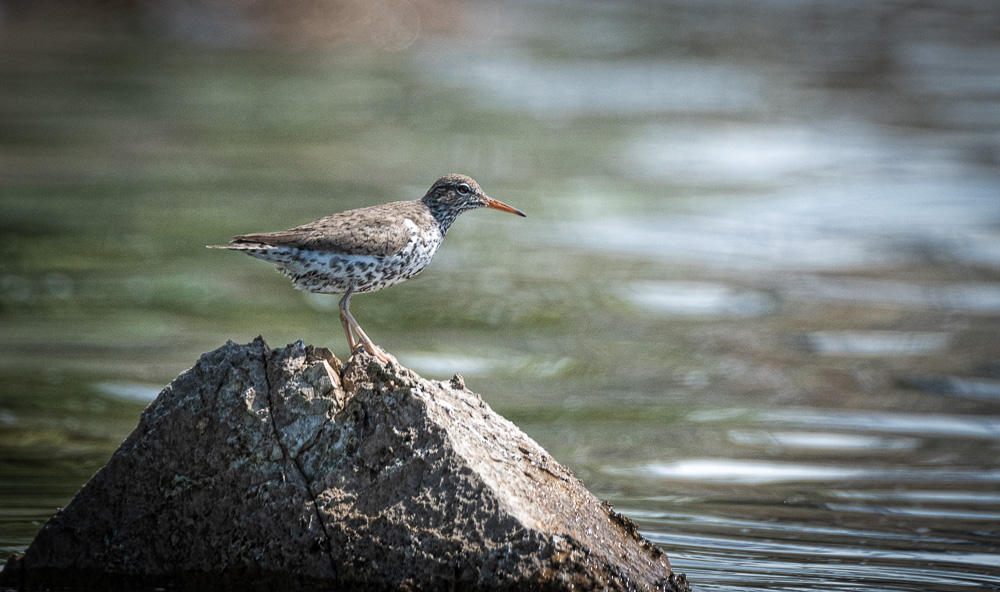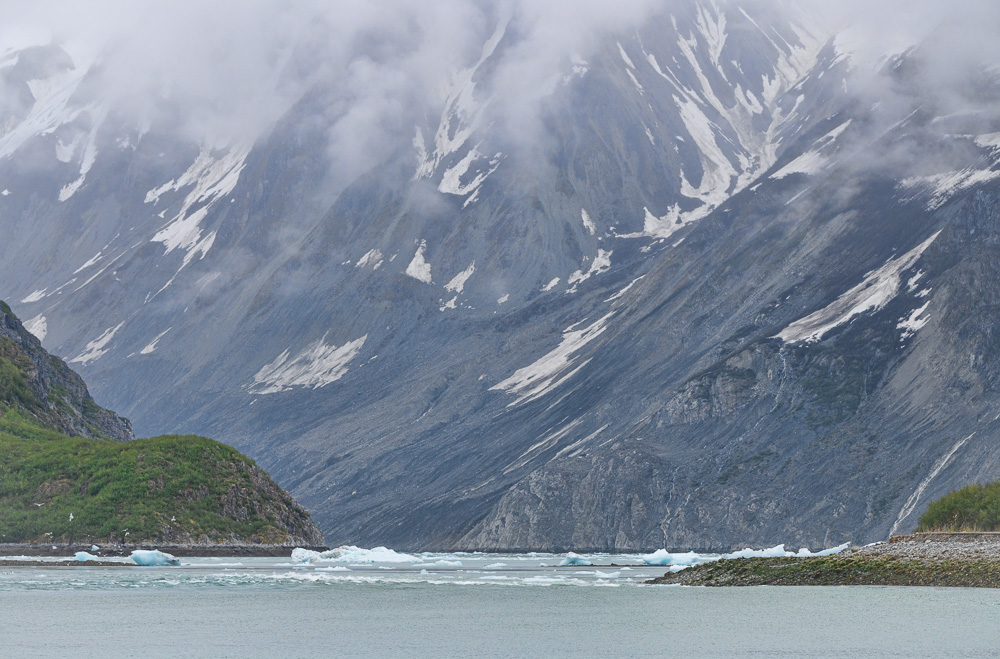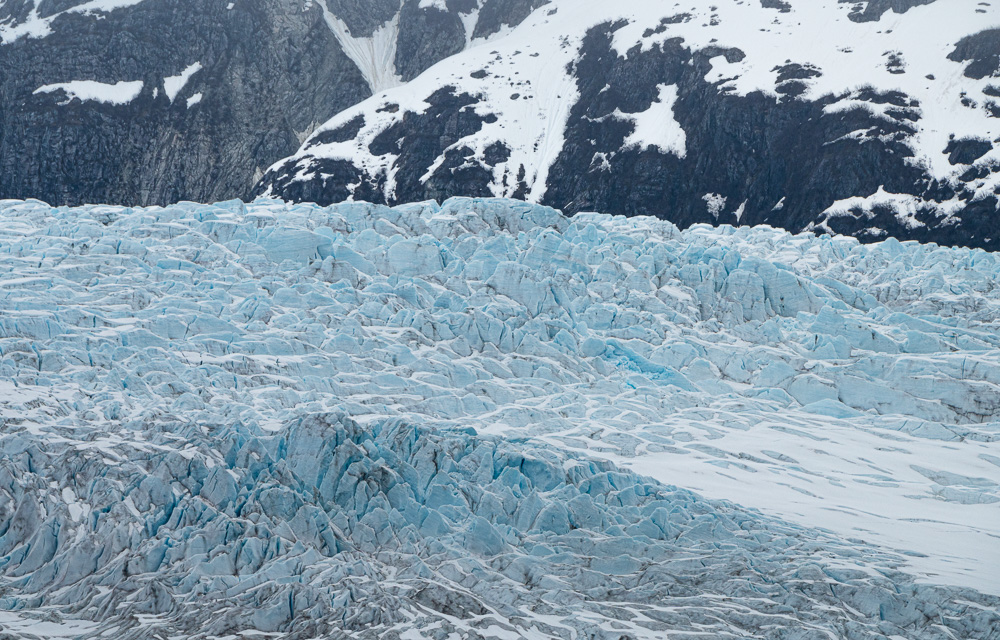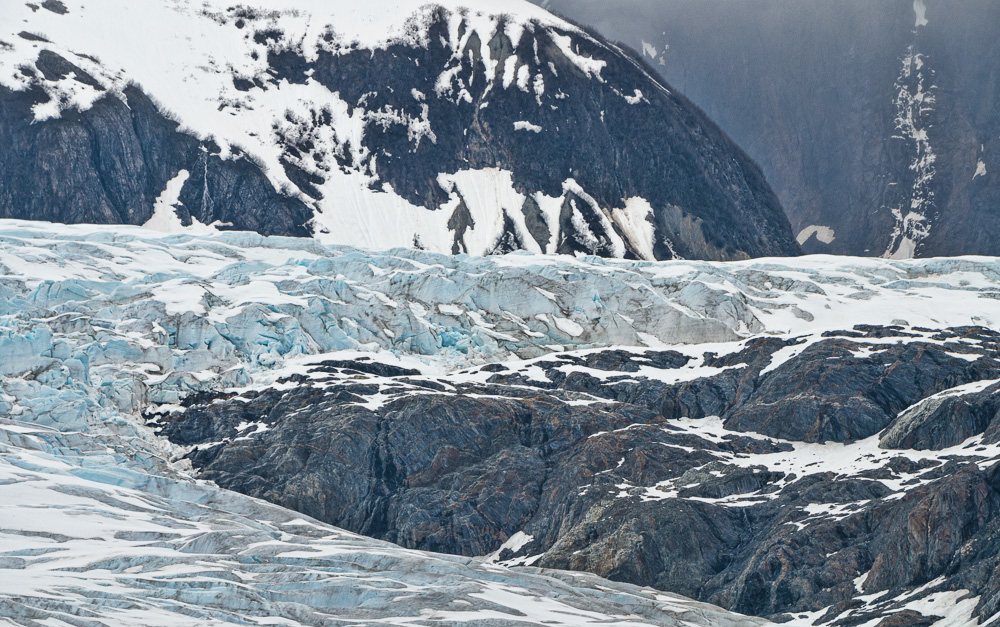Sorry for the long delay – we’ve been very busy having adventures, and I got behind on editing photos. We last left off in the less-visited eastern arm of the bay. We cruised up Muir Inlet all the way to the end, spotting lots of mountain goats on the cliffs. The Muir Glacier doesn’t quite reach the seawater any longer, but it’s fairly close.
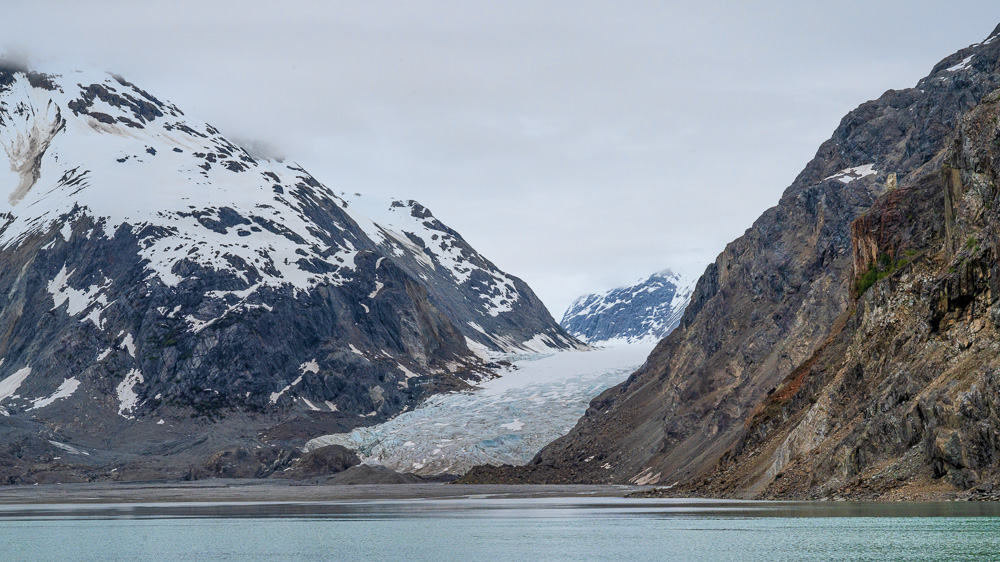
We still found sea otters (and some with pups), even far up the arm. They’re forever in search of food, since they don’t have any real predators and their numbers are increasing. They’re really adorable, but they’re eating machines and that’s a problem for the ecosystem.
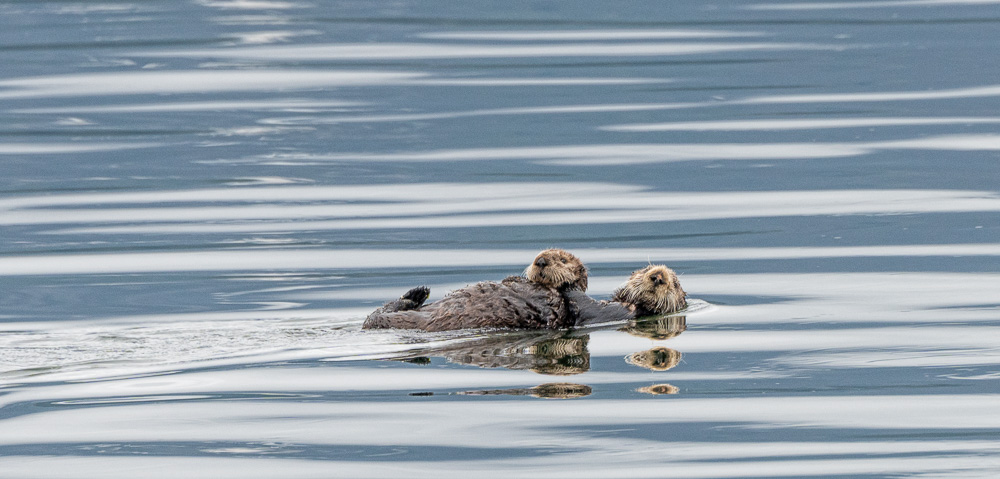
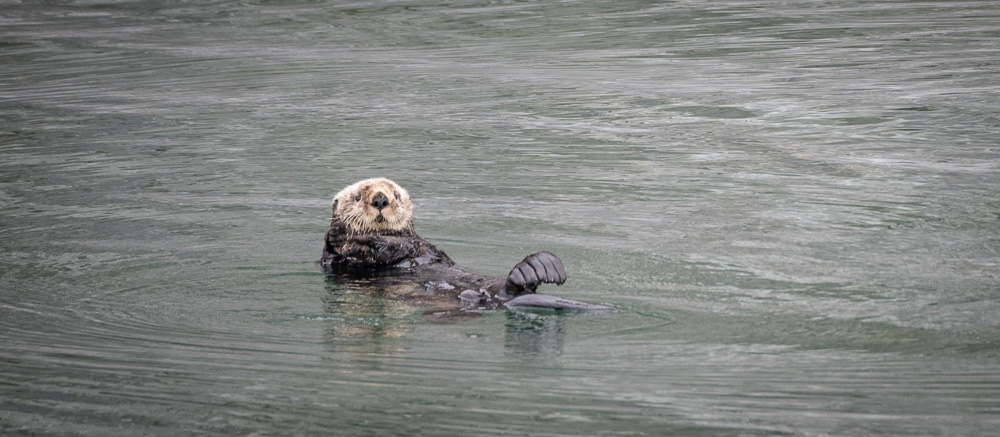
The next day we started our exploration of the western arm of the bay, checking out a few favorite spots looking for bears and mountain goats. We were having a nice lunch in Tidal Inlet and spotted this well-furred brown bear up on the cliff.
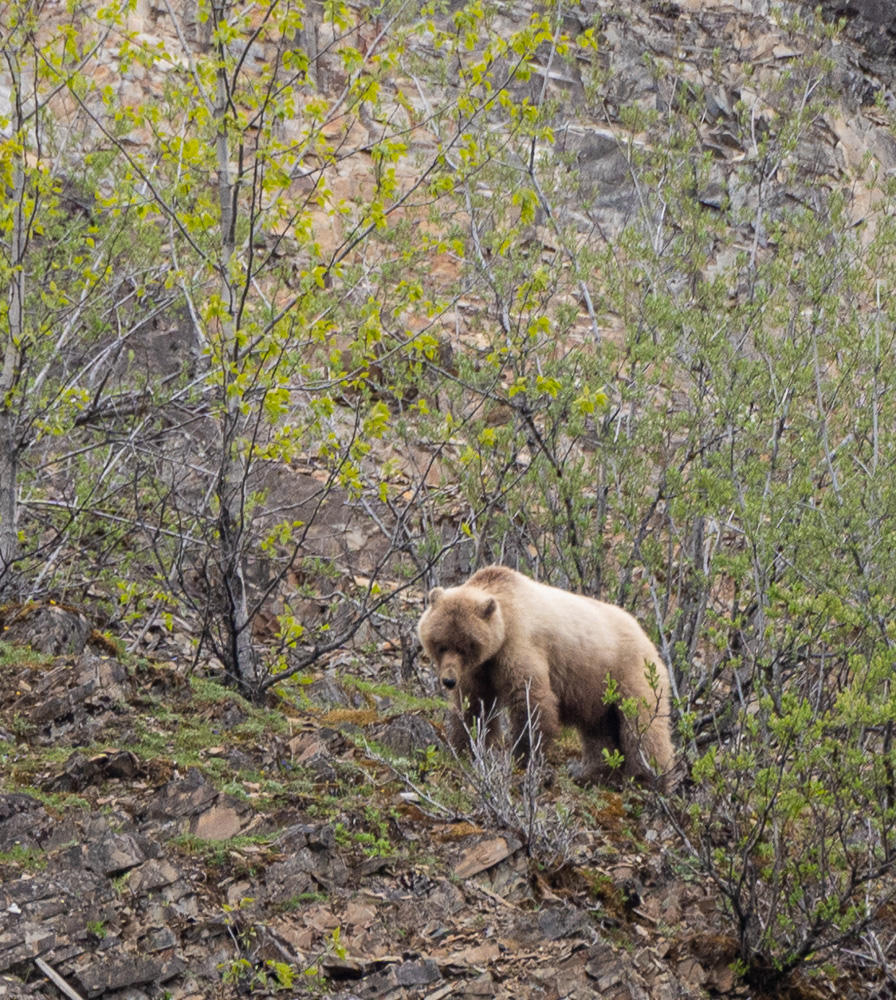
Emerging from Tidal Inlet, we slowly oozed north along Gloomy Knob – a mostly bare mountain that’s usually good for finding mountain goats. We weren’t disappointed!
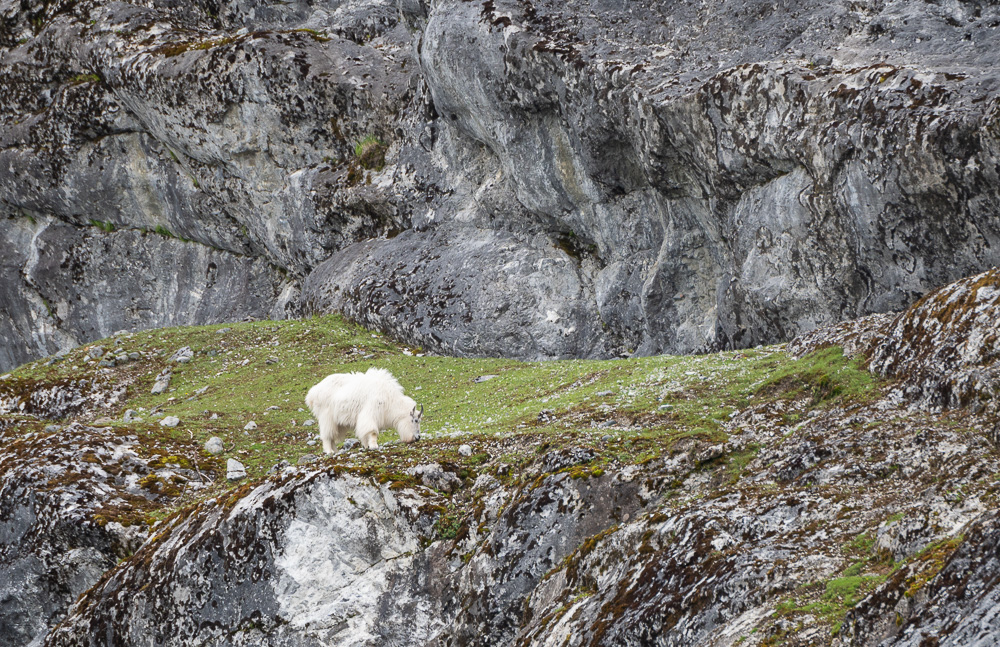
It was interesting to see the goats still in their winter coats, and we were disappointed that we didn’t see any kids yet. Normally at this time of the year the goats are shedding and there are young ones around. With so much snow still on the mountains, we found goats at lower elevations, even some very close to the water’s edge.
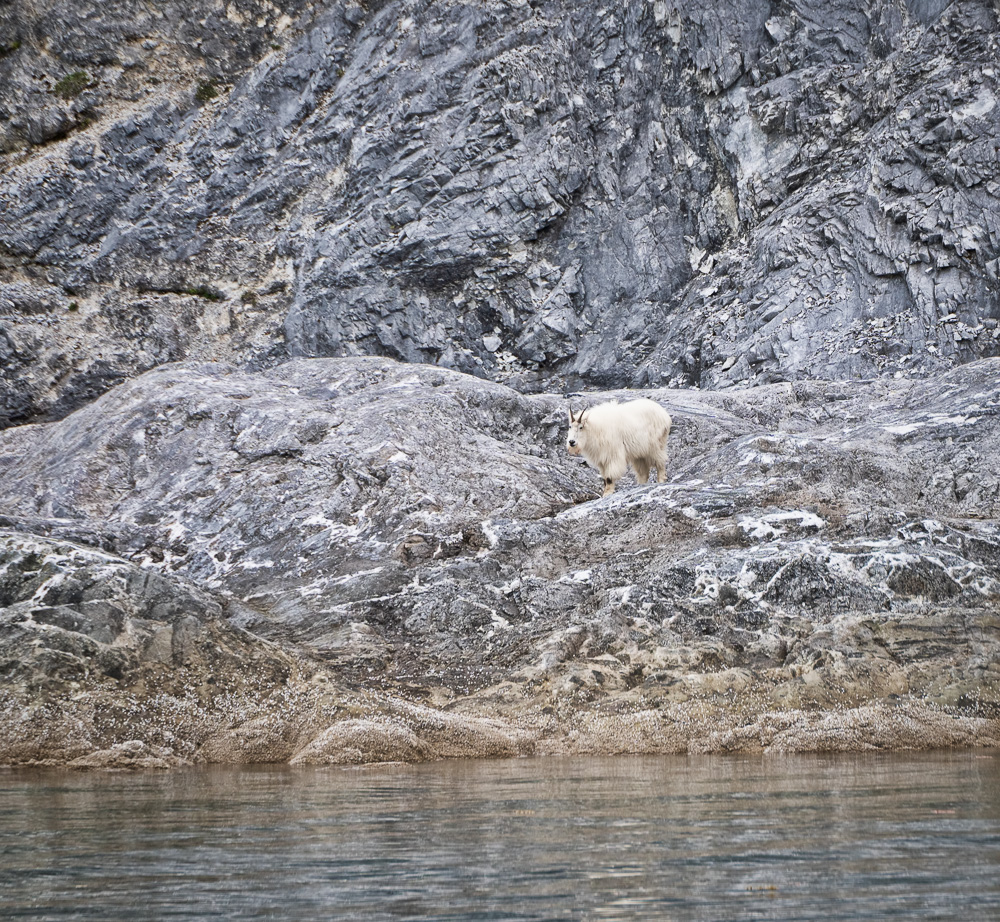
And just while we were busy looking at goats and the occasional puffin or pelagic cormorant zipping by, several humpbacks popped up between the boat and the rocks.
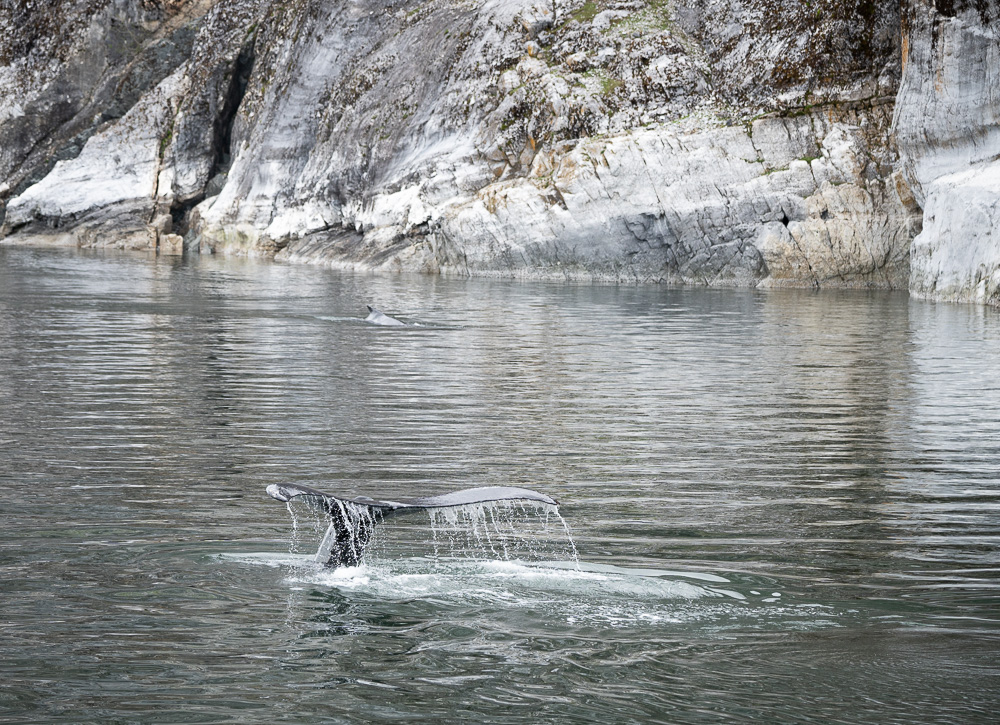
We kept a sharp watch for wolves, but didn’t see any this trip. Last year we spotted 6 black wolves sunning themselves on a beach nearby.
After getting our fill of goats and puffins and whales we continued up the west arm to the glaciers. The Reid Glacier, where we anchor, was covered in fresh snow, and there was snow on the ground all the way down to the tide line. We cruised up by the Johns Hopkins Glacier, but couldn’t approach the face since it’s seal pupping season and the park closes that inlet for a couple of months to give the new seal pups some space. We were surprised to see so little ice in the water – it was easy to navigate around the glaciers, compared to past years.
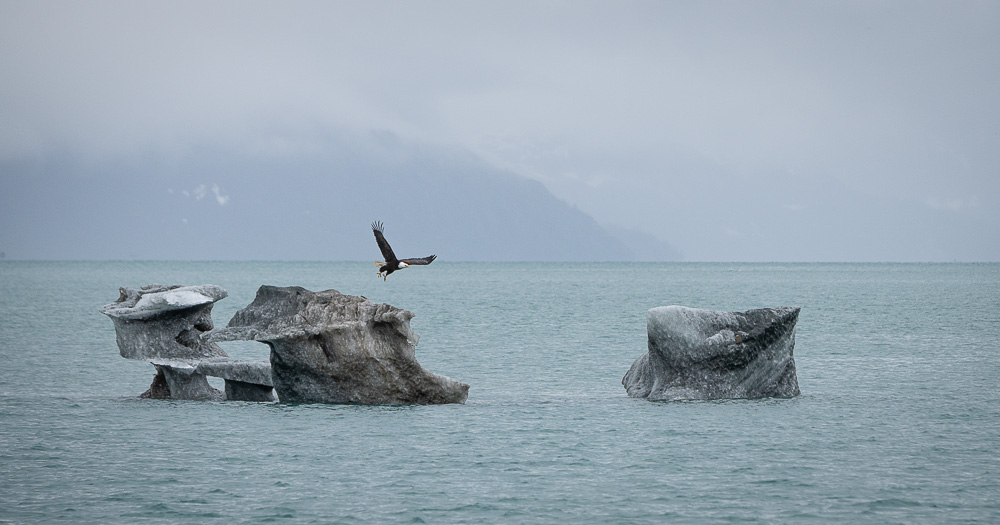
The Lamplugh Glacier is the most blue of the ones in this area, and it’s most beautiful when the weather is gloomy so the surreal blue color really pops.
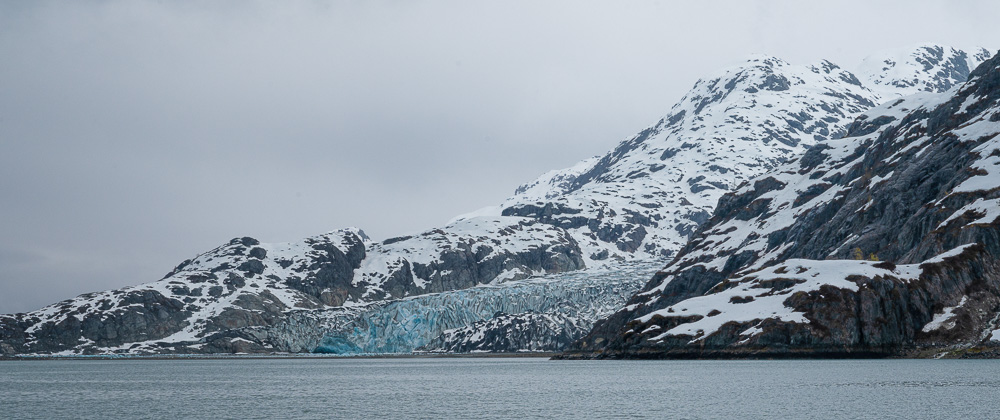
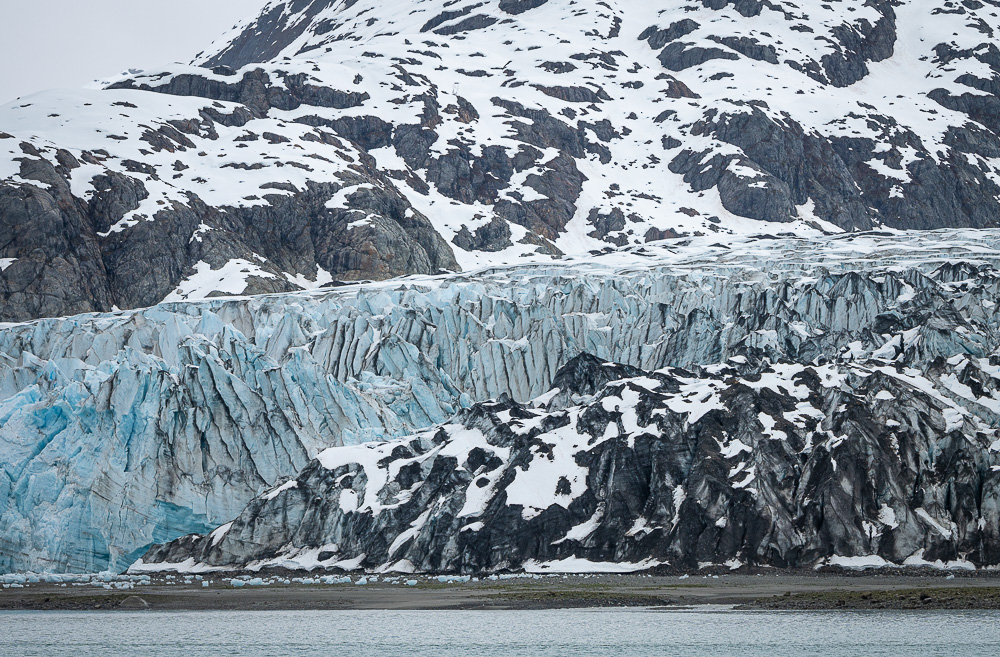
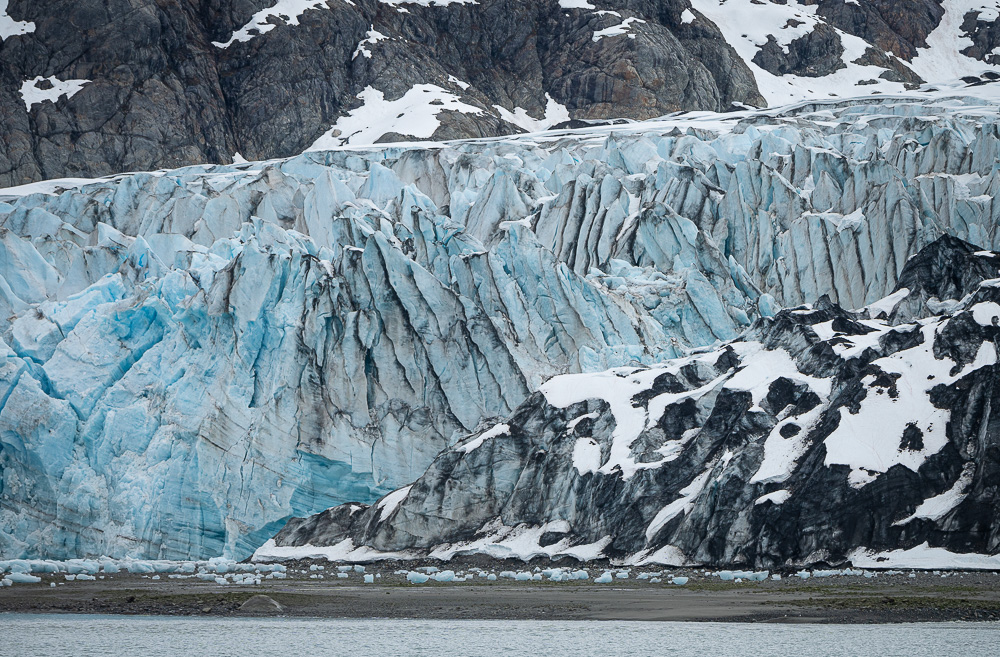
It was so odd to see all the fresh snow – it sure didn’t feel like Memorial Day weekend!
We headed up to see the Grand Pacific and the showy Margery Glaciers, again taking advantage of the lack of brash ice to get farther north and closer to the faces.
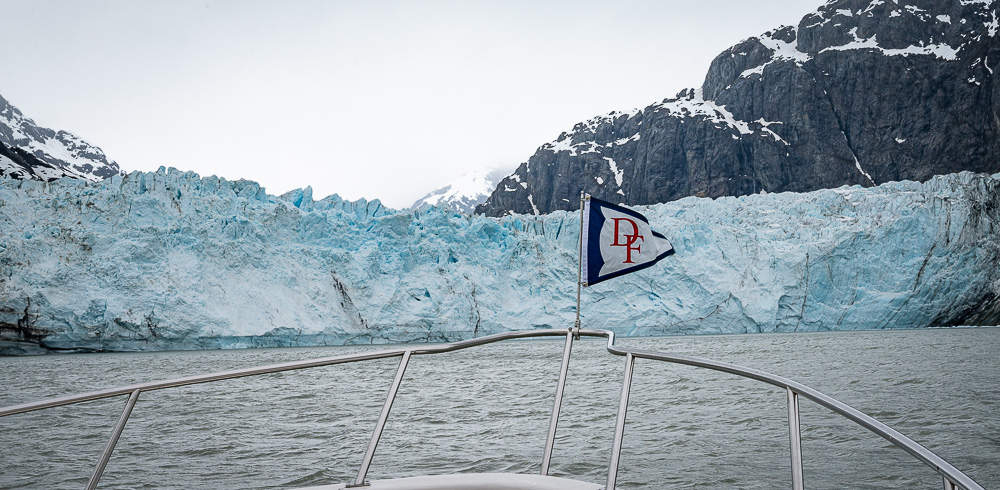
After hiking near the Reid Glacier and riding out some snotty katabatic winds (that blew over 40 knots for most of the afternoon and night), we turned south to the less icy parts of the bay. Anchoring in Fingers Bay we watched a brown bear foraging, mergansers and harlequin ducks feeding, and this black bear munching on barnacles.
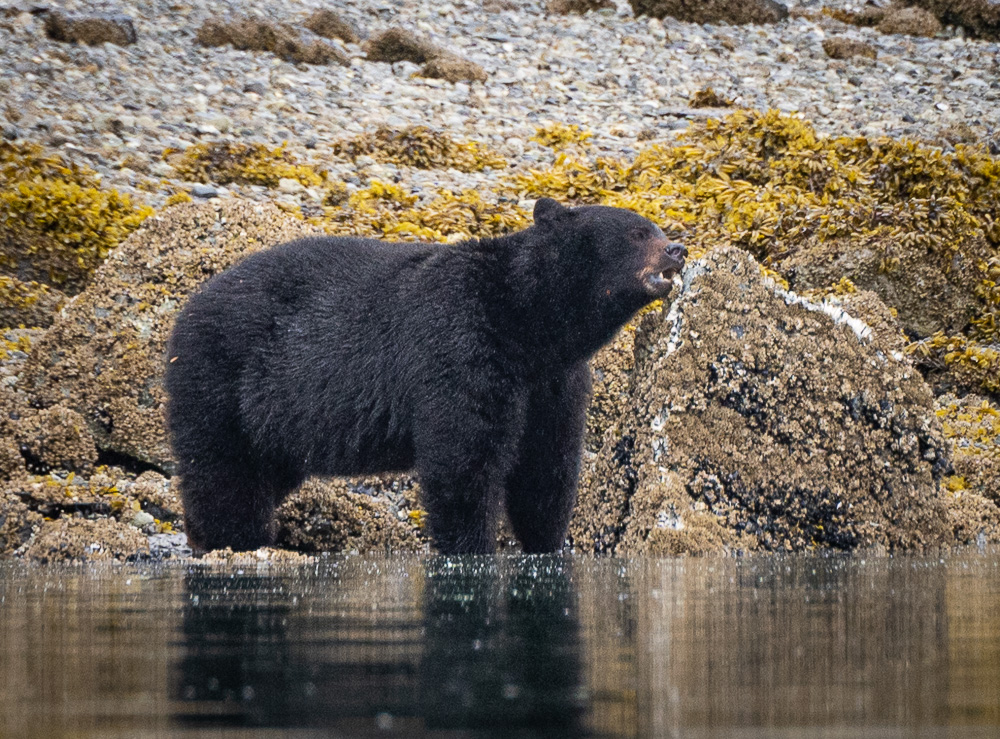
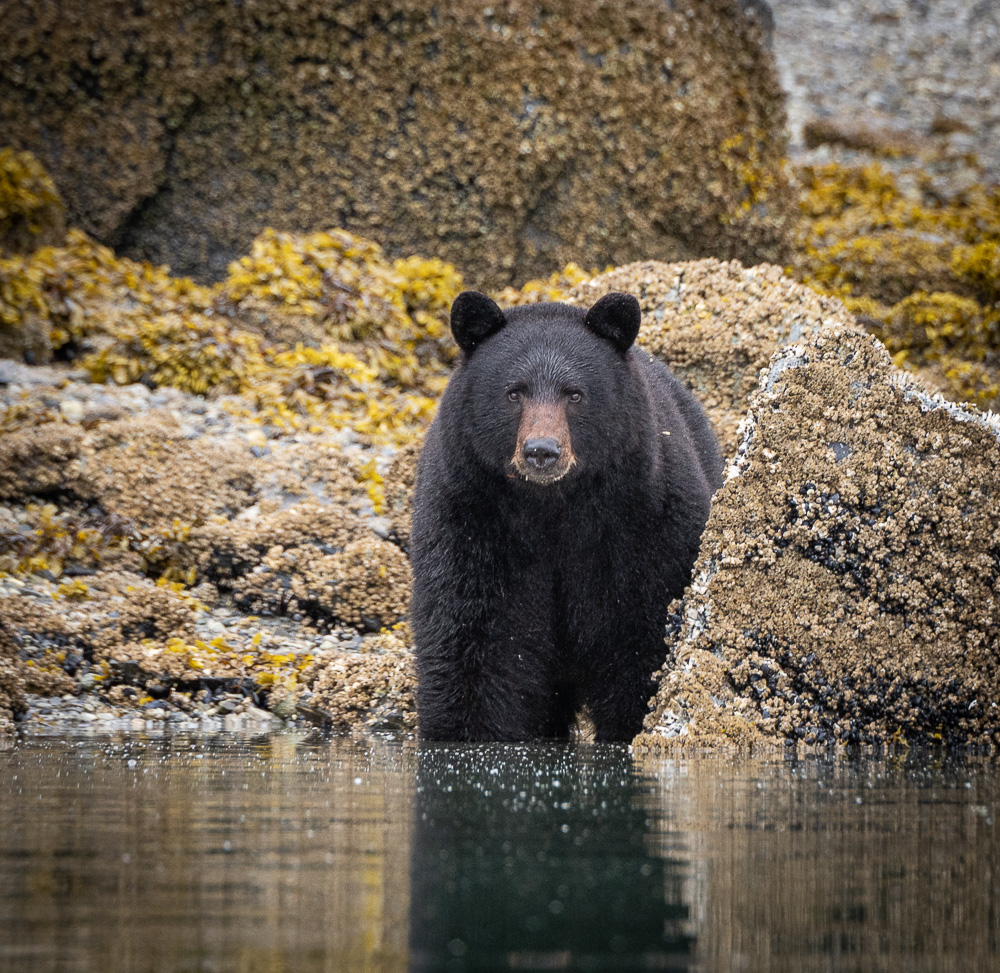
I was able to watch him for quite a while, but once the bear noticed me in the kayak, I had to back away so he would resume feeding. Meanwhile a big flock of black-legged kittiwakes landed behind me…
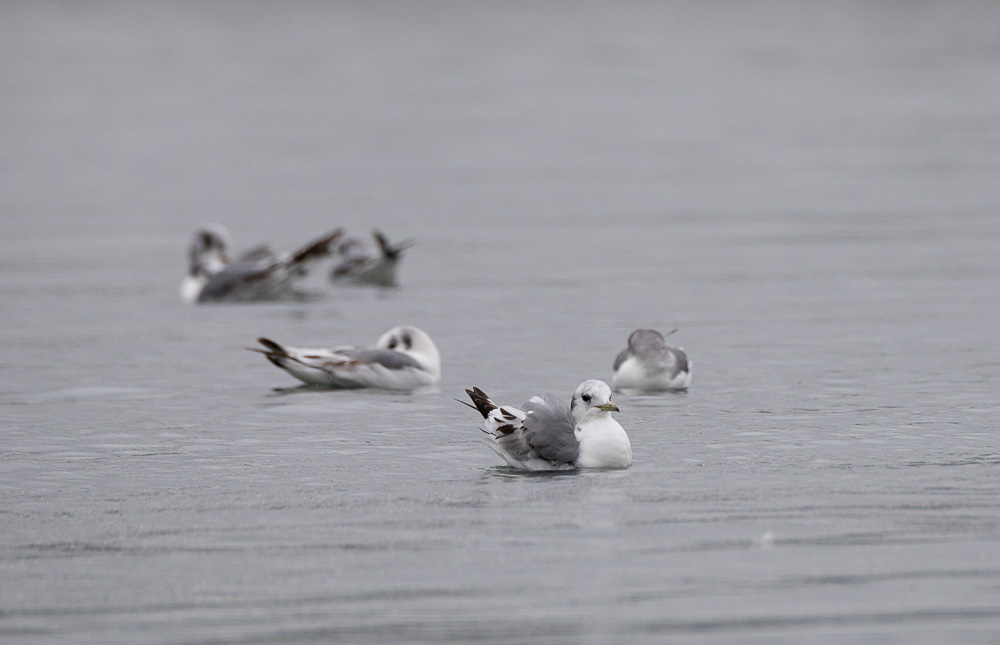
…and a murrelet was diving for food and popped up close by.
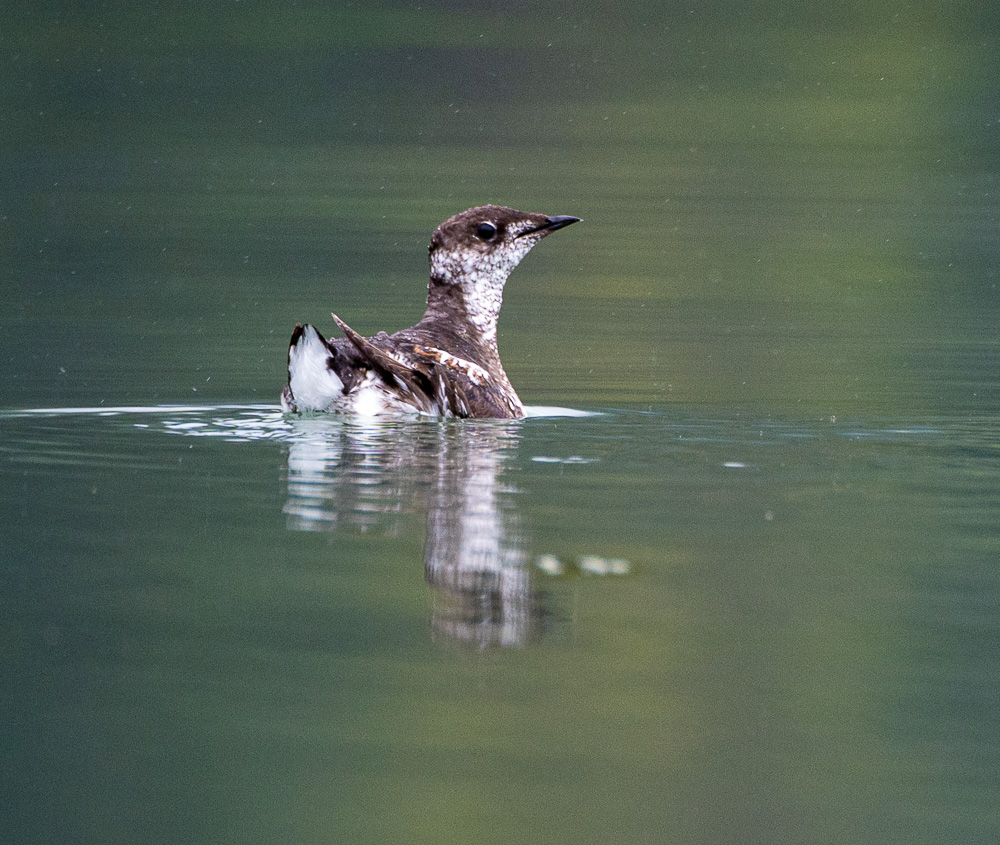
The weather turned misty and rainy, and it was still pretty cold for early June… I didn’t envy Jim having to go out on the bow to retrieve the anchor every day.
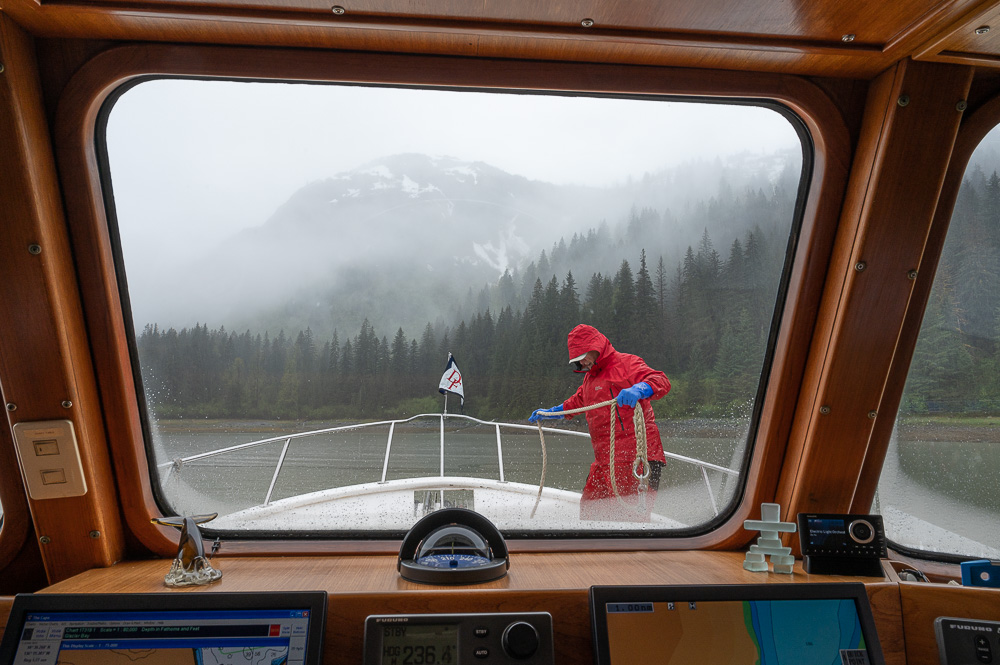
I’ll wrap up the last bit of Glacier Bay in the next post – stay tuned, and I promise you’ll just have to wait a day or two.
